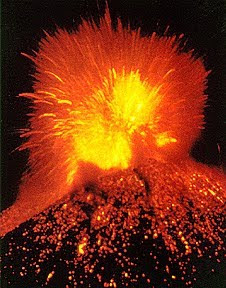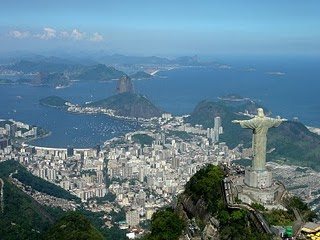In 2008, the news agency CNN has published a new version of the 7 Natural Wonders in the World. There is New Version of the 7 natural wonders in the world :
1. Grand Canyon The Grand Canyon is a steep-sided canyon carved by the Colorado
The Grand Canyon is a steep-sided canyon carved by the Colorado River in the United States in the state of Arizona. It is largely contained within the Grand Canyon National Park, one of the first national parks in the United States. President Theodore Roosevelt was a major proponent of preservation of the Grand Canyon area, and visited it on numerous occasions to hunt and enjoy the scenery.
River in the United States in the state of Arizona. It is largely contained within the Grand Canyon National Park, one of the first national parks in the United States. President Theodore Roosevelt was a major proponent of preservation of the Grand Canyon area, and visited it on numerous occasions to hunt and enjoy the scenery.
2. The Great Barrier Reef
The Great Barrier Reef is the world's largest reef system composed of over 2,900 individual reefs. and 900 islands stretching for over 2,600 kilometres (1,600 mi) over an area of approximately 344,400 square kilometres (133,000 sq mi). The reef is located in the Coral Sea, off the coast of Queensland in north-east Australia.
3. Mount Everest
Mount Everest – also called Qomolangma Peak (Mount Sagarmāthā) is the world's highest mountain above sea level at 8,848 metres (29,029 ft). Part of the Himalaya range in Asia, it is located on the border between Sagarmatha Zone, Nepal, and Tibet, China. In 1856, the Great Trigonometric Survey of India established the first published height of Everest, then known as Peak XV, at 29,002 ft (8,840 m). In 1865, Everest was given its official English name by the Royal Geographical Society upon recommendation of Andrew Waugh, the British Surveyor General of India at the time. Chomolangma had been in common use by Tibetans for centuries, but Waugh was unable to propose an established local name because Nepal and Tibet were closed to foreigners.
4. The Victoria Falls
The Victoria Falls or Mosi-oa-Tunya (the Smoke that Thunders) is a waterfall located in southern Africa on the Zambezi River between the countries of Zambia and Zimbabwe. The falls are some of the largest in the world.
5. Northern Lights / Aurora Borealis
Auroras, also known as northern and southern (polar) lights or aurorae (singular: aurora), are natural light displays in the sky, usually observed at night, particularly in the polar regions. They typically occur in the ionosphere. They are also referred to as polar auroras. This is a misnomer however, because they are commonly visible between 65 to 72 degrees north and south latitudes, which would place it in a ring just within the Arctic and Antarctic circles. Aurorae occur deeper inside the polar regions, but these are infrequent occurrences, and these are often invisible to the naked eye.
6. Parícutin vulcano
Parícutin (or Volcán de Parícutin, also accented Paricutín) is a cinder cone volcano in the Mexican state of Michoacán, close to a lava-covered village of the same name. It appears on many versions of the Seven Natural Wonders of the World. Paricutín is part of the Michoacán-Guanajuato Volcanic Field, which covers much of west central Mexico.
7. Harbour of Rio de Janeiro
The Port of Rio de Janeiro is Brazil's third busiest port in terms of cargo volume, and it is the center for cruise vessels. Located on the west coast of the Guanabara Bay, it serves the States of Rio de Janeiro, São Paulo, Minas Gerais, and Espírito Santo. The port is managed by Companhia Docas de Rio de Janeiro. The Port of Rio de Janeiro covers territory from the Mauá Pier in the east to the Wharf of the Cashew in the north. The Port of Rio de Janeiro contains almost seven thousand meters of continuous wharf and an 883-meter pier. The Companhia Docas de Rio de Janeiro administers directly the Wharf of the Gamboa general cargo terminal; the wheat terminal with two warehouses capable of moving 300 tons of grains; General Load Terminal 2 with warehouses covering over 20 thousand square metres; and the Wharves of Are Cristovao with terminals for wheat and liquid bulk.
source : here
Saturday, May 15, 2010
The New 7 (Seven) Natural Wonders of the World
Labels: Nature Phenomena
Posted by besar at 4:28 AM
Subscribe to:
Post Comments (Atom)

0 comments:
Post a Comment